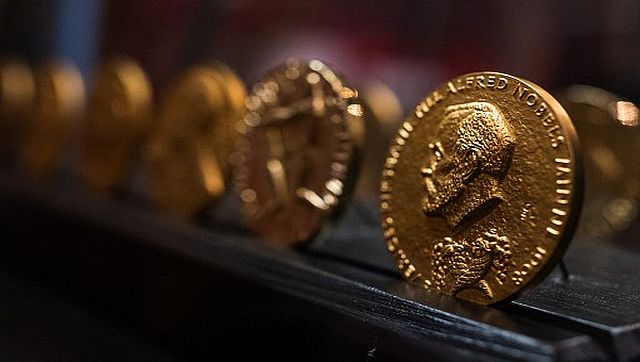On Tuesday, three scientists won the Nobel Prize for physics. Pierre Agostini, Hungarian-born Ferenc Krausz and French-born Anne L’Huillier won for their work examining electrons in atoms. L’Huillier is the fifth woman to receive a Nobel in physics. While their work on the atom – fundamental to virtually everything important to humanity including chemistry, physics, our bodies and our gadgets – could result in massive changes one day, the prize being awarded to three scientists has also turned the spotlight back on what some call Nobel’s ‘rule of three’. But what is it? And what’s the problem with it? Let’s take a closer look: What is it? First, let’s briefly examine the Nobel prize. The Nobel prize was created by Alfred Nobel, a 19th Century businessman and chemist from Sweden. Nobel, the inventor of dynamite, was an exceedingly wealthy man. He created the annual prize to honour “those who, during the preceding year, have conferred the greatest benefit to humankind.” [caption id=“attachment_13199572” align=“alignnone” width=“640”] A painting by Swedish artist Emil Österman depicting the founder of the Nobel Prize, Alfred Nobel. nobelprize.org[/caption] However, one of the statutes of the Nobel Foundation – established in accordance with Nobel’s will – states: “A prize amount may be equally divided between two works, each of which is considered to merit a prize. If a work that is being rewarded has been produced by two or three persons, the prize shall be awarded to them jointly.”
“In no case may a prize amount be divided between more than three persons.”
It is this above statute that has been labelled the Nobel’s ‘rule of three’. What’s the problem? The problem is that the days of one man or woman having a wondrous breakthrough – like Albert Einstein pioneering his Theory of Relativity or Sir Isaac Newton publishing the Philosophiae Naturalis Principia Mathematica in 1867 – are long past. As Martin Rees, British cosmologist and physicist and former president of the Royal Society, explained to CNN, a big problem for the Nobel committees is that scientific inquiry has more and more become a collective endeavour. Moreover, different teams can make the same scientific breakthroughs while working separately. “It may be a project where several people have done work in parallel, and they single out some and not others. It may be that there’s a team, and it’s not obvious that the ones they’ve singled from the team are the dominant figures,” Rees added.
Rees cited the example of the 2017 Nobel Prize in physics.
The 2017 Nobel Prize in physics – which measured movements made by gravitational waves created in the last fifth of a second as two black holes spiraling together collided and whose detection confirmed predictions Albert Einstein made 100 years earlier about the fabric of space and time – was given to Thorne, Weiss and Barry. However, Rees stated that the two key papers noting the discovery had nearly 1,000 authors. David Pendlebury, head of research analysis at Clarivate’s Institute for Scientific Information, agrees with Reese. Pendlebury told CNN, “It really has become a huge transformation in science that it’s more and more team science — huge groups tackling more difficult problems, international collaborative networks.” “This rule of three does seem to be an impediment if they wanted to recognise a team.” But the Nobel Foundation seems in no hurry to change anything. Peter Brzezinski, the secretary of the committee for the Nobel Chemistry Prize, told CNN, “We start the process by asking a number of experts from around the world to write reports describing the field in which the discovery has been made, to outline the main discoveries in this field and also to mention individuals who have made the most important contributions.” [caption id=“attachment_11406841” align=“alignnone” width=“640”] A Nobel medal. AP[/caption] “We read all relevant literature, attend conferences and write reports also within the committee,” Brzezinski added. “With time, we often succeed in identifying a limited number of scientists who have made the discovery. If this is not possible, we are not able to propose a Prize to the Academy.” The Nobel Prize in medicine was awarded Monday to two scientists for discoveries that enabled the development of mRNA vaccines against COVID-19. The prizes in chemistry, literature, peace and economics will follow, with one announcement every weekday until 9 October. The first Nobel Prizes were presented in 1901, five years after Nobel’s death. In 1968, a sixth prize was created, for economics, by Sweden’s central bank. Though Nobel purists stress that the economics prize is technically not a Nobel Prize, it’s always presented together with the others. With inputs from agencies


)

)
)
)
)
)
)
)
)



